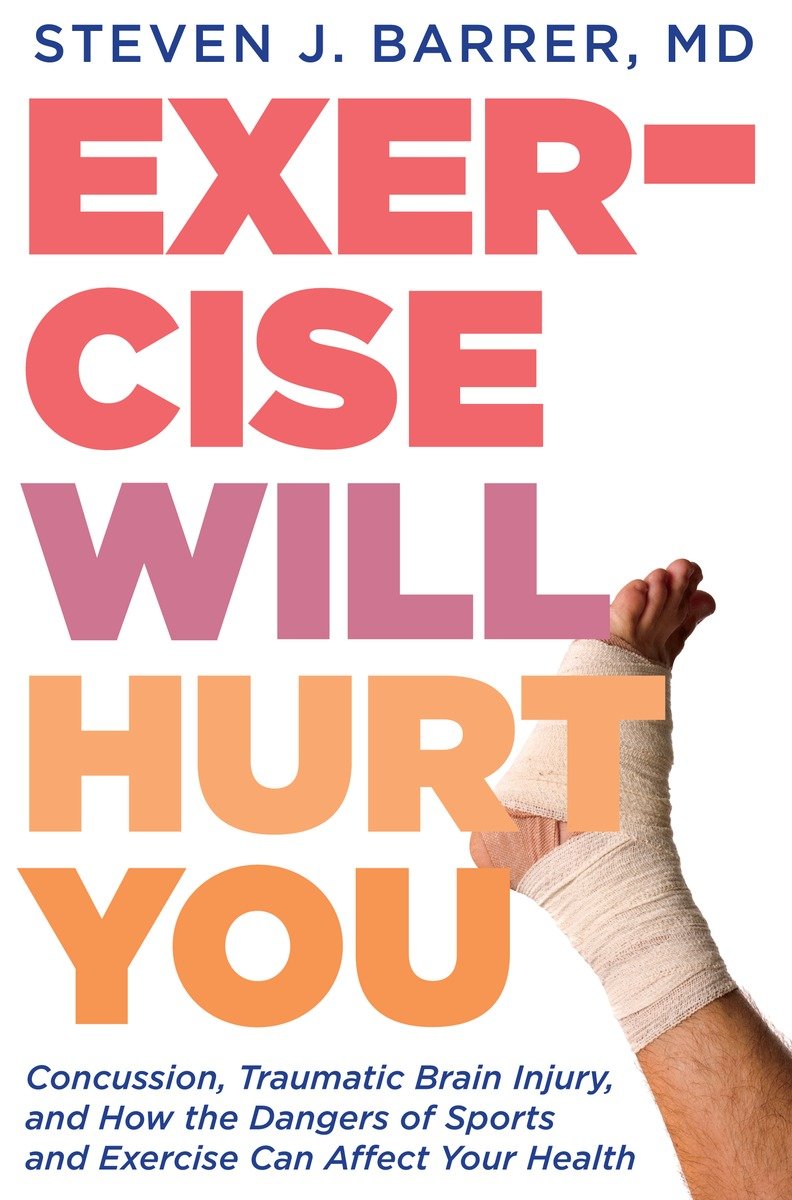Exercise Will Hurt You
| by |
|---|
18.00 JOD
Please allow 2 – 5 weeks for delivery of this item
Description
A (Philadelphia Magazine) Top Doc’s case for moderation in running, cycling, skiing, and other things we do because we think our bodies are invincible. When was it decided that exercise could only be good for you? Leading neurosurgeon Dr. Steve Barrer argues—based on his extensive career treating exercise-related injuries, a cornucopia of his own personal injuries from exercise over the years, and ample scientific data—that we ought to change the way we think about exercise. Instead of succumbing to what Barrer calls “the cult of exercise” that follows the mantra “no pain, no gain,” how about some common sense? In a clear, friendly, and compelling voice, Barrer surveys exercise and sports that are commonly practiced—yoga, soccer, skiing, running—and informs the reader knowledgeably and conscientiously about the injuries that can result. We’ve come to believe that the body can handle the abuse that comes with these sports, but it can’t. Before we get carried away with the culture of excess that has been assigned to exercise, let’s remember that exercise is not always good for you, and make sure we don’t get the wrong idea from the model that’s been set.
Additional information
| Weight | 0.36 kg |
|---|---|
| Dimensions | 1.99 × 13.59 × 21.26 cm |
| PubliCanadation City/Country | USA |
| by | |
| Format | Hardback |
| Language | |
| Pages | 224 |
| Publisher | |
| Year Published | 2014-11-4 |
| Imprint | |
| ISBN 10 | 1609805356 |
| About The Author | STEVEN J. BARRER, MD is currently Director of the Neurosciences Institute and Chief of the Division of Neurosurgery at Abington Memorial Hospital in Philadelphia. Dr. Barrer was named among the “Top Docs” in Philadelphia Magazine from 2009–2012 and has published numerous journal articles and papers on the subject of neurosurgery. Dr. Barrer is involved in educating medical students and residents, holds a position on the clinical faculty of Temple University School of Medicine in Philadelphia, and is frequently invited as a guest speaker for his patient-centered passion, wisdom, and wit. |
"You know to steer clear of those artery-clogging fries and that steaming cup of coffee. Dr. Steve Barrer now shows us the dangers that lurk in. . .exercise! Whether you're a professional athlete, a weekend cyclist, occasional jogger, or parent of a young athlete, heed this witty neurosurgeon's warning or you may end up maimed or worse." —Michael Lemole MD, Chief of Neurosurgery, University of Arizona, and chief neurosurgeon for Congresswoman Gabrielle Giffords |
|
| Table Of Content | IntroductionChapter 1The Cult of Exercise and the Mechanics of InjuryChapter 2Recreational, Fashionable Exercise: Running, Bicycling, YogaChapter 3Competitive, Contact Exercise: Boxing, Football, HockeyChapter 4Extreme Exercise: The Marathon, "Extreme" Sports, CrossFit, SkiingChapter 5The Sports-Industrial ComplexChapter 6What Do I Do? The Gym, Gardening, ConclusionsNotesCredits and Permissions |
| Excerpt From Book | INTRODUCTION I have never done anything athletic where I haven’t hurt myself. Some of the injuries have been minor, others not so insignificant. Allow me to explain with a few examples. Some years ago, while bicycling in a group, I broke my wrist—no minor injury for a surgeon. And I didn’t even fall. My attention wandered for a moment and I rode onto the shoulder. The road surface was asphalt with a square-edged side that created a drop-off to the roadside that served as a culvert. It put me on a direct collision course with a drainage pipe that ran under a driveway just a few yards ahead of me. If I had collided with the pipe, my tire would have wedged into it, the bike would have come to an instantaneous halt, and I would have been catapulted over the handlebars. In that surreal moment, just before disaster strikes and you know it’s coming, time slows: I had a vivid picture of what was about to happen. The types of possible injuries flashed through my mind. It wasn’t a question of whether or not there would be a crash. It was only a matter of how severe it would be. In desperation, fueled by panic, I attempted to correct my course. With only a few microseconds to make a decision, I turned the bike back into the road edge, figuring it would cause me to fall. But sliding along the road surface still in contact with the bike would be preferable to being launched through the air. It appeared at first to have succeeded. My front wheel struck the elevated road edge, causing the front tire to pop up in the air and land back on the road surface, and the rear tire followed. I was actually back on the road, still upright and even headed in the right direction. No one riding with me seemed to have even noticed. The impact, however, caused a jarring that rippled up the bike’s forward fork to the handlebars and fractured the scaphoid bone of my left wrist. At the time, I thought it was at worst a sprain. I didn’t pay too much attention to the pain that at first was only mild. Mostly, I was overwhelmingly relieved that I would not require the local emergency medical services. I was also oddly proud of myself for having avoided what only seconds previously had loomed as a catastrophe. I finished the ride with my friends, loaded my bike back onto its carrier and drove home. By that evening my wrist had become increasingly painful and swollen. I went to my hospital and had it x-rayed. I read the film myself and saw what looked like a fracture, but in my practice I rarely need to look at x-rays of the extremities. I had one of my emergency room col- leagues look at it and he confirmed the break. The scaphoid bone is one of eight that make up the wrist. It has a worrisome incidence of non-union, a situation where the bone does not heal, causing chronic pain, and in someone who works with his hands, disability. I consulted with my friend and hand surgeon, Bob Takei (yes, cousin of George Takei, Hikaru Sulu on ‘Star Trek’), who gave me two options: I could wear a cast for twelve weeks, and if it didn’t heal, undergo surgery to place a screw across the fracture, or go directly to the screw, in which case I’d be out of work for only four weeks. The next day I had the surgery, and was back in the operating room in two and a half weeks. Bob wasn’t happy with my timeline but was pleased that it healed so well. Doctors make the worst patients, with the possible exception of nurses. Why do I dwell on this injury? Because it, along with the rest of my personal history and more than thirty years of practicing medicine, have convinced me that, almost no matter what you do, exercise will hurt you… |
Only logged in customers who have purchased this product may leave a review.
Related products
-
On backorder 2-5 Weeks to Arrive
8.99 JOD -
On backorder 2-5 Weeks to Arrive
12.00 JOD -
Low stock
17.99 JOD -
On backorder 2-5 Weeks to Arrive
120.00 JOD






Reviews
There are no reviews yet.